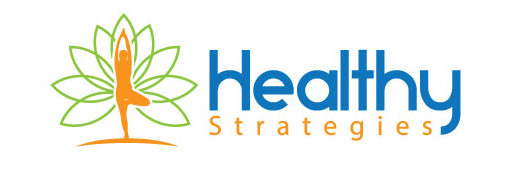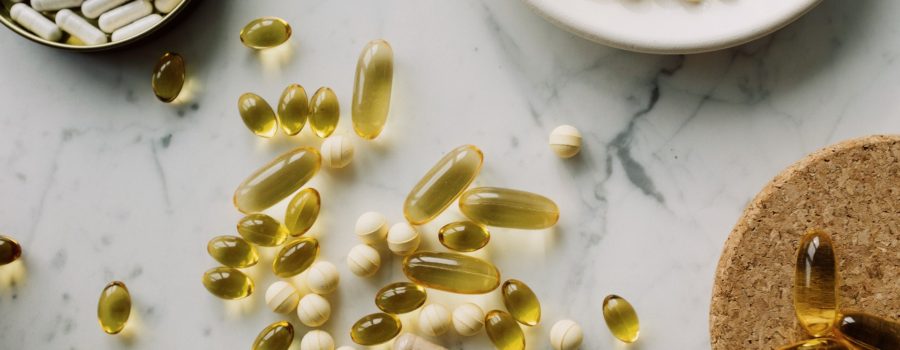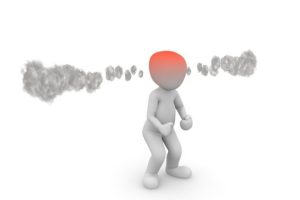More Supplements? Yes, and These Are Super-Important!
More supplements? Oh, come on! This is probably what you’re thinking, but I promise you these are super-important!
- NAC (N-Acetyl Cysteine)
- trace minerals (selenium, zinc, copper, chromium)
- Coenzyme Q10 (CoQ10)
Don’t forget though, because many supplements can interact with medications or may not be a good choice because of specific health conditions, always ask your medical professionals before starting, or even buying any supplements. Moreover, just because are derived from natural products or similar to them, it doesn’t mean some of them can’t be harmful in certain circumstances.
The next from the “more supplements” headline is one that most of us apparently need. Related to detoxification purposes, beside having many other benefits, it’s called NAC (N-Acetyl Cysteine). It helps replenish glutathione, often called “the mother of all antioxidants.”
NAC is used in medical practice to minimize liver damage when treating acetaminophen (tylenol) poisoning. It can also thin out mucus—important for people with frequent respiratory recurrent (bronchitis). Sometimes is used in preparation for intravenous radiologic contrast dye studies (for people sensitive to dye but who absolutely need that particular study).
Gluthatione is a simple molecule that our body produces and recycles. It’s made from three amino acids (derived from the proteins we eat), and one of them contains sulfur. This is why eating broccoli, cauliflower, cabbage, dark leafy greens, and other sulfur contain vegetables is so important.
We can obtain all components that make glutathione from the foods, but at some point we can’t keep up with the demands, due to poor nutrition (processed foods, sweets), pesticides, heavy metals, and numerous other environmental toxins we’re exposed to. Leading a stressful life plays an important negative role as well.
Selenium—a trace mineral we all need and we have to get from diet—also plays an important role in how NAC works. That’s why some NAC supplements combine it with selenium.
I decided to get NAC from Pure Encapsulation brand and the multivitamins I picked have selenium. I think I may consider in the future the NAC from Doctor’s Best, as it has selenium in the supplement itself (and molybdenum).
Since we got to Selenium, I just want to add a few things about it, as well as other minerals. It is also important for the thyroid to function properly. Natural sources of selenium include nuts (especially walnuts, Brasil nuts), seeds, eggs, meats, mushrooms, and dark greens (more so dandelion and mustard greens).
Another mineral I discussed in a separat article, magnesium, helps converting an aminoacid we get from food (methionine) to a substance (SAM-e), that also plays an important role in recycling glutathione in the liver.
Magnesium, as well as other important minerals (zinc, chromium), are also found in nuts and seeds, leafy greens, beans, wheat germ. Chromium can help in sugar control, while zinc improves immune system function. Certain substances—phytates—from grains and legumes can interfere with absorption of minerals, but this is usually a concern for people on vegetarian diets or those relying exclusively on grains.
However, when taking mineral supplements, it’s best to be in between fiber rich meals. When taking zinc supplements, copper has to be taken as well, in a ratio of Zinc/Copper of 15/1.
Coenzyme Q10 (for short CoQ10), it’s something I heard about many times in biochemistry classes in medical school. The professor called it coenzyme Q, but is the same component. It’s very useful for mitocondrial function, thus our general well-being. Without proper function, we have less energy, gain weight, and so on.
I medical practice, people taking cholesterol lowering drugs (statins), benefit from CoQ10, as statins are one group of medications known to decrease it. Apparently, it benefits most of us. It can interfere with some blood thinners, though.
CoQ10 apparently helps against migraines. I’m really curious about this. For me they got a lot better after removing foreign estrogens from numerous daily products.
I’ve seen many times the mitochondria being called “the power house of the cell,” as this is where our body burns the nutrients to produce energy. Mitocondrial function depends on many nutrients and cofactors, some produced by our body, others derived from foods.
For the most part of our youth (and we all have a different idea at what age are we still young), our body produces all these supplies we need, but poor diet, many medical conditions, medications, and other factors take a toll and we become more or less deficient.
CoQ 10 works best when taken along with NAD supplements, as well as B-complex vitamins. The B vitamins along with the active form of folate (called MTHF), perform a very important function, by providing methyl groups for the reactions they are needed. I don’t want to get into chemistry details, but I just wanted to emphasize using it along with B Complex vitamins.
In Functional Medicine it’s stipulated that CoQ10 also works better along with another component called PQQ, that’s why you may find supplements containing both. Being a fat-soluble supplement, should be taken after a meal that has some fat in it (olive oil, avocado, nuts, eggs), just like the Omega-3 and vitamin D or E supplements.
The bile secretion and the pancreatic enzymes are stimulated when eating something with fat in it. The same enzymes and bile are making the absorption of these fat-soluble supplements. Other manufacturers advertise bioperrine (a black pepper extract), as a an absorption enhancer. The fat soluble vitamins and supplements are usually geltabs—as depicted here, but liquid forms are available as well, and I prefer this if the taste is not horrible.
One thing that’s important for sure is for the Co Q10 to be obtained by fermentation—this ensures the bioactive trans-form (patented by Kaneka). It’s more effective than the cis-form, usually synthetic. When it comes to supplements, cheaper is not usually a good quality. The cheaper CoQ 10 obtained through fermentation, is one exception so far, and although cheaper, is more effective.
On the ingredient lists for these supplements it may appear as ubiquionol or ubiquinone. Some manufacturers claim ubiquionol is better than ubiquinone because it’s better absorbed. It’s my understanding that these forms are interchangeable as they make their way through our metabolic reactions. I will get a Ubiquinol product from D0ctor’s Best.
In a previous post I explained why I generally don’t take gelcaps, because polyethylene glycol or polysorbates are used in homogenizing the mix before the capsules are sealed. This company seems to use a different technology, as does Garden of Life—which is another option for me, even though their product comes as ubiquinone.
I’m waiting for a response from both companies about the possible use of the antifreeze-derived ingredients in mixing the supplements. You can download the FREE list by clicking the link above. It’s part of a bonus on the food additives checklist.
I open all my veggie capsules and sprinkle the supplement on top of juice, yogurt, even coffee or tea. B-Complex vitamins are well represented in my multivitamin supplements, therefore I’ll provide the needed B vitamins for CoQ10 to work. As for NAD, I decided to get the Elysium Health brand for now; seems like a clean one, although quite expensive.
Wow, we covered a lot of ground learning more supplements are needed. The next post will address some more specific nutrients for people with autoimmune, inflammatory conditions, like me. Since overweight, diabetes, high blood pressure—all these cause a certain degree of inflammation in the blood vessels, the nutrients that help against inflammation may be of interest for many.



